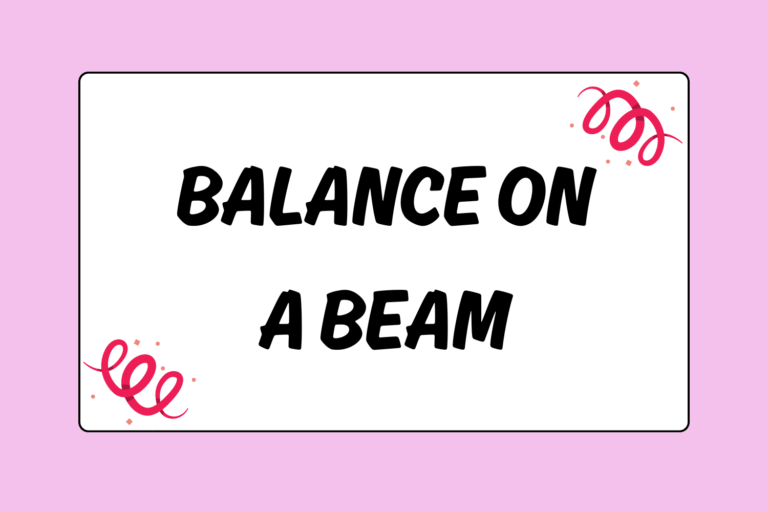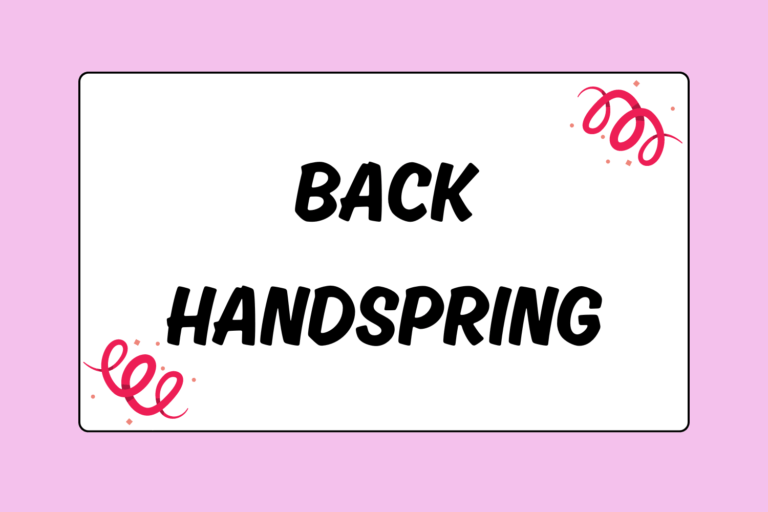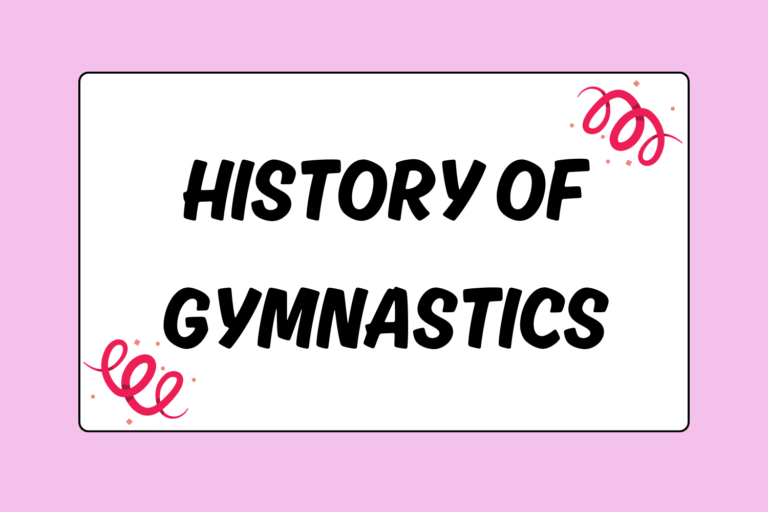Gymnastics is full of exciting, almost death-defying tricks. Gymnasts can pull off an incredible tumbling pass, spring across a balance beam, swing high above on parallel bars, or powerfully fly through the air over a vault. These skills may seem impossible and nerve-shattering, but they can be reached with extensive practice and proper knowledge. The initial building block of this wisdom begins with a firm understanding of the six basic gymnastics positions:
- Hollow
- Arch
- Tuck
- Straddle
- Pike
- Lunge
These basic positions are used in a variety of different combinations that will help you correctly pull of new skills. The following sections explain the proper form for each position and offer an exercise that will help you master the technique.
Hollow & Arch
You’ll use the hollow and arch positions in many different skills. These positions are two opposites of the same extreme, meaning that the body is kept in the same basic position with a few major differences.
The Hollow Position Explained
Here’s how to get in the proper hollow position:
- Keep your arms up by your ears.
- Tuck your chin to your chest with your chest rounded inward.
- Contract your stomach muscles.
- Keep your hips turned under.
- Squeeze your legs tightly together, and keep your toes pointed.
The Hollow Rocks exercise is an effective way to practice the hollow position:
- Lay on the mat with your lower back pushed into the mat.
- Lift your legs and head slightly off the mat and focus your eyes on your toes.
- Think of your body as the rocker on a rocking chair and slowly rock back and forth.
The Arch Position Explained
Here’s how to get in the correct arch position:
- Keep your arms up by your ears.
- Keep your head tilted back with your chest open.
- Flex your buttocks and lower back muscles.
- Push your hips forward.
- Keep your legs squeezed tightly together and your toes pointed.
Use the Superman exercise to practice the arch position:
- Lay on your stomach with your hips pressed into the mat.
- Lift your arms, head, chest, and legs off the mat while keeping your arms and legs straight.
Tuck, Straddle & Pike
When taking any gymnastics class, no matter your age or ability, you will learn a tuck, straddle, and pike position. These beginning-level positions will be used as you work your way through many gymnastics skills. Starting with rolls, and moving toward flips and release moves on bars, these basic positions should be mastered from day one.
Mental Edge
When learning these positions it’s important to know the difference between open and closed. The terminology might sound simple, but these words can refer to a few different things. Having your hips open refers to the position of your hips when standing or arching. Closed hips means the position of your hips when you’re bending over or sitting. Open shoulders means your arms are above your head, pointing toward the sky. Closed shoulders means your hands are at your sides, pointing toward the ground.
The Tuck Position Explained
Here’s how to get in the proper position for a tuck:
- Sit on the mat with your hips closed.
- Bend your knees and pull them to your chest.
- Tuck your chin to your chest.
- Grab each shin with your hands.
- Point your toes forward and keep your feet tucked under your body.
The Rock-n-Roll exercise is a great way to practice the tuck position:
- Sit down on the mat and pull your legs to your chest.
- Grab your right shin with your right hand, and grab your left shin with your left hand.
- Tuck your chin to your chest as you rock backward and forward without letting go of your legs.
- Keep your body in a tight ball, not allowing yourself to tip from side to side.
The Straddle Position Explained
Here’s how to get in the correct straddle position:
- Sit on the mat with your hips closed.
- Your arms can be up by your ears or touching the mat in front of you.
- Keep your legs straight and separated equally to the right and left.
- Point your toes and keep your leg muscles contracted so that your legs don’t bend.
- Keep your head in a neutral position.
The Straddle Stretch on a Wall exercise helps you practice the straddle position:
- Lie on your back with your legs toward a wall.
- Slide your body in so that your legs rest on the wall as if you were sitting in a chair.
- Keeping your legs very straight, open them up as much as you can and hold a straddle against the wall. It’s important to have your legs, buttocks, and heels touching the wall.
- Make sure your toes are pointed.
The Pike Position Explained
Here’s how to get in the proper pike position:
- Sit on the mat with your hips closed.
- Your arms should touch the mat on each side of your legs.
- Keep your legs straight and squeezed tightly together in front of you.
- Point your toes and keep your leg muscles contracted so that your legs don’t bend.
- Keep your head in a neutral position.
The Pike-ups exercise is a great way to practice the pike position:
- Hang on a high bar with your legs together and toes pointed.
- Lift your legs to waist level while keeping them straight out in front of you.
- Raise your legs to a 90-degree angle or higher.
- A pike-up, like the pike position, can vary in degrees, including lifting your legs all the way up to tap your toes on the bar.
Hot Tip: Make a Game of It
Gather a group of gymnasts and sit in a circle on the mat. Pick one person to be the leader who calls out the different positions. Once they call for a certain position, the gymnasts must get into the proper position as quickly as possible. The leader will also hit each position as it’s called and may try to trick the gymnasts by saying “straddle” but doing a tuck.
Lunge
The lunge position is used in many different skills as an entry move. For example, a gymnast could lunge into a cartwheel or a round-off. The lunge provides power as the gymnast pushes off their lead leg and drives the heel of their back leg up. Correct form is important to obtaining the power needed for more advanced tumbling skills.
The Lunge Position Explained
Here’s how to get in the ideal lunge position:
- Start with your feet together and step forward with one foot.
- Bend your lead leg and keep your back leg straight.
- Your front foot should always be in front of your knee, and your feet should turn out a bit.
- Keep your arms by your ears, reaching forward with an imaginary straight line from your fingers to the heel of your back leg.
- Keep your head in a neutral position.
Practicing Lunge Steps will help you master the lunge:
- Stand on one edge of the mat and take a giant step forward into the proper lunge position.
- Hold the lunge for a few seconds and then bend your back leg and bring it forward.
- Continue across the entire mat, alternating legs. Doing so will strengthen your legs and help you learn the proper lunge position.
Hot Tip: Step It Up a Notch
To increase the difficulty of this exercise, add a heel drive to your lunge step. Begin as you would a lunge step, but instead of holding the lunge, kick your back heel up with a powerful heel drive. Push through your lead leg with a slight hop off the mat as you kick your back leg upward. Continue across the mat.
Practice Makes Perfect
You’ll use the aforementioned positions in many different gymnastics skills. Since they’re so widely used, it’s important you understand the proper form and are familiar with each position. Once you understand these positions, you can build on them and learn the more advanced positions. The important thing to remember is that each step in gymnastics is a building block for more exciting skills. The practice you put in at the lower levels will make you a better gymnast in the future. Be sure to read part two of this series: Advanced Gymnastics Positions Explained.





